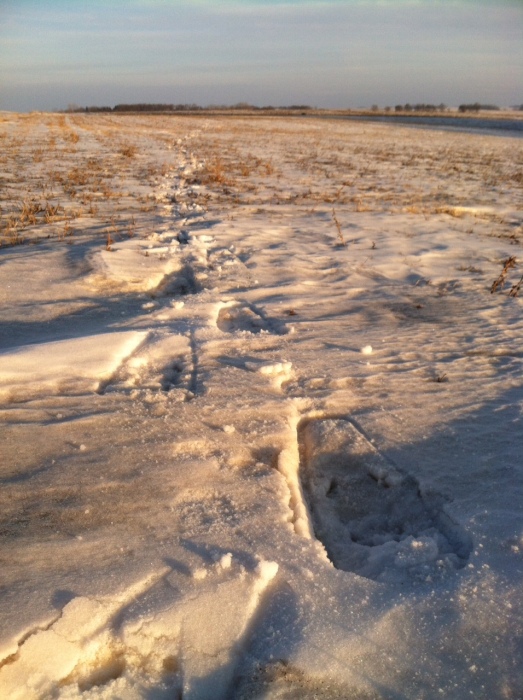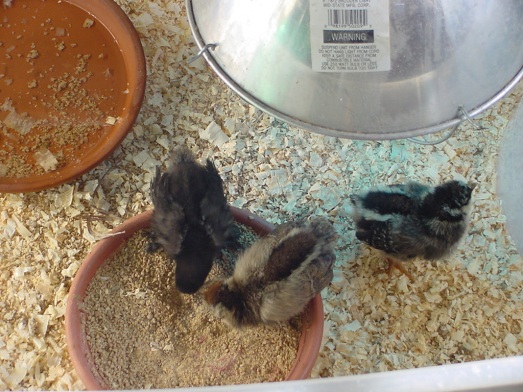It was a gorgeous day to be outside. After what seemed like a month of sub-zero temps, some of which was designated The Great Polar Vortex Event of 2014, it was ever-so-slightly above freezing this afternoon, and it felt like time to cast aside the long underwear and cavort wool socks-less across the prairie.
Yeah, right.
The trapdoor to the chicken coop was opened, and although the hens showed no inclination to actually set foot in that horrific white stuff outside, they did stand on the gangplank and eat it, and blink at that blinding warm-for-once thing in the sky. The feral cat-who-thinks-she’s-a-chicken stopped her shivering slinking-on-the-porch begging for food (which I had been giving her through the worst of the cold) and went off to forage on her own (probably at the feeder inside the chicken coop).
I clomped sloppily through the yard drifts in my snow boots for awhile–checking for girdling on fruit tree trunks (none), filling the bird feeders (empty), and generally taking in the warmth and sunshine. We had a couple of days of strong south winds at the tail end of the Vortex (the cold retreating north?) and it ripped two clappers off John’s wind chimes and tossed this pretty little nest on the ground.
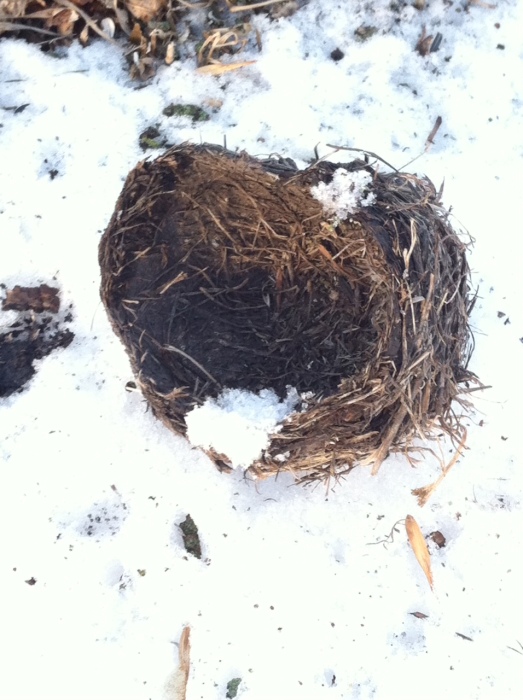 I found one of the clappers, and I suppose the other will eventually be unearthed as the snow subsides. With the leaves off the trees, it’s probably a blessing that those clappers flew off–the first night it really blew, I could hardly get to sleep with all the clanging on the south lawn. We’ll know better to take them down next winter.
I found one of the clappers, and I suppose the other will eventually be unearthed as the snow subsides. With the leaves off the trees, it’s probably a blessing that those clappers flew off–the first night it really blew, I could hardly get to sleep with all the clanging on the south lawn. We’ll know better to take them down next winter.
We haven’t gotten much snow this year, but what we have got has been re-arranged by the aforementioned wind into various striations of drifts and dips. Some of the wind-sculpture is really quite lovely.
 But, it’s tough slogging in regular boots–there’s no rhythm to the walking with a couple of steps easy and light, then floomph!–down into the deep stuff, then up on top of the still-hard crust that at next step whoa!–gives way underfoot. Much easier to strap on snowshoes for a proper survey of the prairie.
But, it’s tough slogging in regular boots–there’s no rhythm to the walking with a couple of steps easy and light, then floomph!–down into the deep stuff, then up on top of the still-hard crust that at next step whoa!–gives way underfoot. Much easier to strap on snowshoes for a proper survey of the prairie.
 Even though we haven’t got much snow this year, we still have a decent blanket on the whole of the prairie. While much of the vegetation that’s there is still pigweed and lamb’s quarter (the local SWCD planted the prairie last summer, when it finally warmed up), those stems and roots bind the soil, catch the snow, and secure the moisture. Snow depth ranged from about an inch way up on the top south-facing slope to six or seven inches where there were taller fringes of vegetation.
Even though we haven’t got much snow this year, we still have a decent blanket on the whole of the prairie. While much of the vegetation that’s there is still pigweed and lamb’s quarter (the local SWCD planted the prairie last summer, when it finally warmed up), those stems and roots bind the soil, catch the snow, and secure the moisture. Snow depth ranged from about an inch way up on the top south-facing slope to six or seven inches where there were taller fringes of vegetation.
Not so on the cultivated fields that surround us–snow is melting fast there, and without substantial crop residue, there’s nothing to hold the moisture–or the soil. You can easily see the line between our prairie and the cultivated fields just driving by, and with another day or two of warm temperatures, the difference will be even more apparent, as more of the neighbors’ “black dirt” is exposed to the elements.
 Meanwhile, we are the “beneficiaries” of our neighbors’ farming practices–in every nook and cranny of our snow-catching prairie, we’re also catching their exposed and eroding topsoil.
Meanwhile, we are the “beneficiaries” of our neighbors’ farming practices–in every nook and cranny of our snow-catching prairie, we’re also catching their exposed and eroding topsoil.
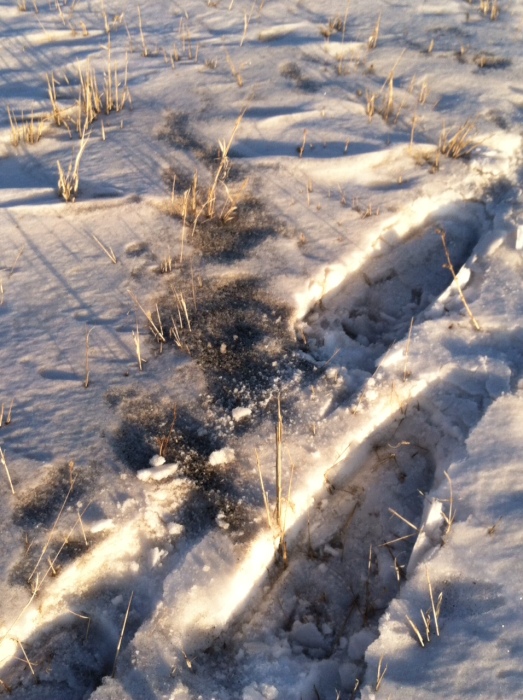 Now, I like topsoil a lot, but I’m not greedy–I’d much prefer my neighbors kept theirs–anchoring it with crop residue and even a cover crop so it doesn’t end up next door, or downstream. In case you think this is an isolated occurrence–only happening this year because we had so little snow–please feel free to read the blog of the former owner of this very farmstead from five (much snowier) years ago, appropriately titled, “Thanks for the topsoil.”
Now, I like topsoil a lot, but I’m not greedy–I’d much prefer my neighbors kept theirs–anchoring it with crop residue and even a cover crop so it doesn’t end up next door, or downstream. In case you think this is an isolated occurrence–only happening this year because we had so little snow–please feel free to read the blog of the former owner of this very farmstead from five (much snowier) years ago, appropriately titled, “Thanks for the topsoil.”
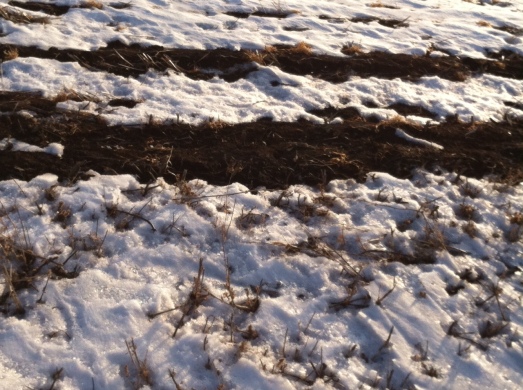 Sometimes I think back to that football halftime show where a woman’s nipple was exposed–how shocked and morally offended people were–and I wonder how much better off this country would be if we were half as up-in-arms about exposed soil as we were about an exposed nipple.
Sometimes I think back to that football halftime show where a woman’s nipple was exposed–how shocked and morally offended people were–and I wonder how much better off this country would be if we were half as up-in-arms about exposed soil as we were about an exposed nipple.

